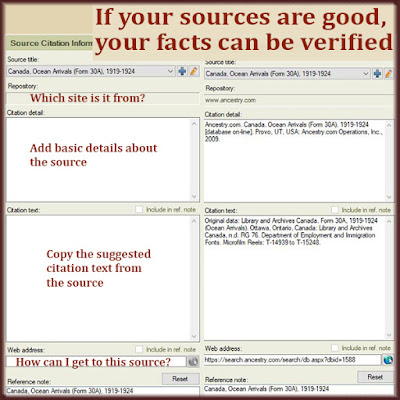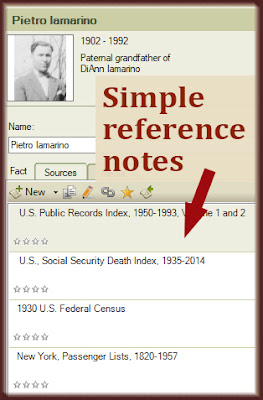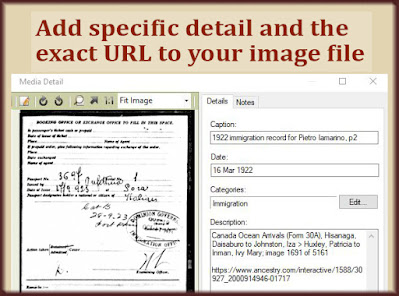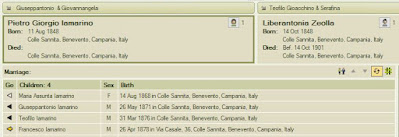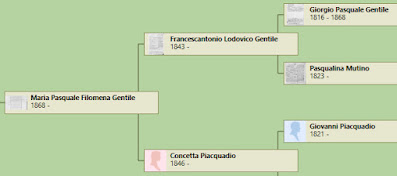When we're new to building a family tree, many of us start entering details known to our closest relatives. Many of those names, dates, and places may be correct. But if you don't have any documents to back up your information, then it's all hearsay. Why should your newfound 3rd cousin believe your tree?
I want each of us to make our family tree as professional as possible. I want your tree to be your legacy. "Oh, she was the cousin who did all that family history research. She did an amazing job!" That's what the relatives will say about you.
 |
| These tips will help you make your glorious family tree an ultra-reliable thing of beauty. |
My family tree at the moment has a staggering 84,675 people. Are they all my blood relatives? Heck no. But all my ancestors came from small, neighboring towns in Italy. So the connections are endless. For centuries, people in these little towns married someone from their town or the next town. My whopper of a tree pulls these towns together—as far together as the available records allow.
My family tree gives hints to distant cousins and unrelated people who have roots in the same towns as me. I'm thrilled when a stranger finds their relatives in my family tree. But I understand my responsibility, and I take it seriously.
We all have a responsibility to publish verified facts if we have our tree anywhere online. That's why I'm STILL working through the list of people in my tree who need source citations. (See how you can "Catch and Fix Your Missing Source Citations".) After more than a year, I've cut my list of completely unsourced people in half. I don't know if I should be happy or start crying.
Here are a few past articles to inspire you to give "cred" to the people and facts in your family tree.
Provide the Proof and Change Their Minds
As this genealogy hobby grows and spreads, so does misinformation. Find out how these errors get started, what to do about them, and how to avoid making them yourself.
How to Be a Family Tree Myth Buster
In the 1970s my brother was writing a college paper on our family history. Grandpa said his father became an evangelical minister in Italy. That had to be unusual. The only way I was able to confirm this story was in person.
When I visited the children of Grandpa's younger sister in Italy, they told me the story and showed me the chapel. It still exists!
There's no available documentation about my great grandfather's church. But there were documents to prove another bit of family lore—and disprove yet another.
3 Ways to Best Use Family Tree Hints
Online family tree hints can be a big help. But a hint that links to someone else's family tree, and not to any documents, is not a source. It's nothing more than a clue to guide your research.
To make your family tree produce valuable hints for others, be sure you're using hints the right way. These examples will take your research to the next level.
How to Tell if a Hint is Any Good
When you do find those hints, you may see that some are worth pursuing. And if you have enough evidence to know the hint is correct, be ready to expand that search. Find out how to harvest that good hint for all it's worth.
5 Tips to Use When Genealogy Documents Disagree
As you work to provide proof for your facts, you're bound to find "facts" that disagree. These 5 tips will help you make sense of a jumble of data. What can you do if the document that would provide 100% proof is not available? Follow the logic and see which document is the most reliable.
It's time to get busy. But don't worry. If your family tree isn't massive like mine, this worthwhile project won't take you forever.










